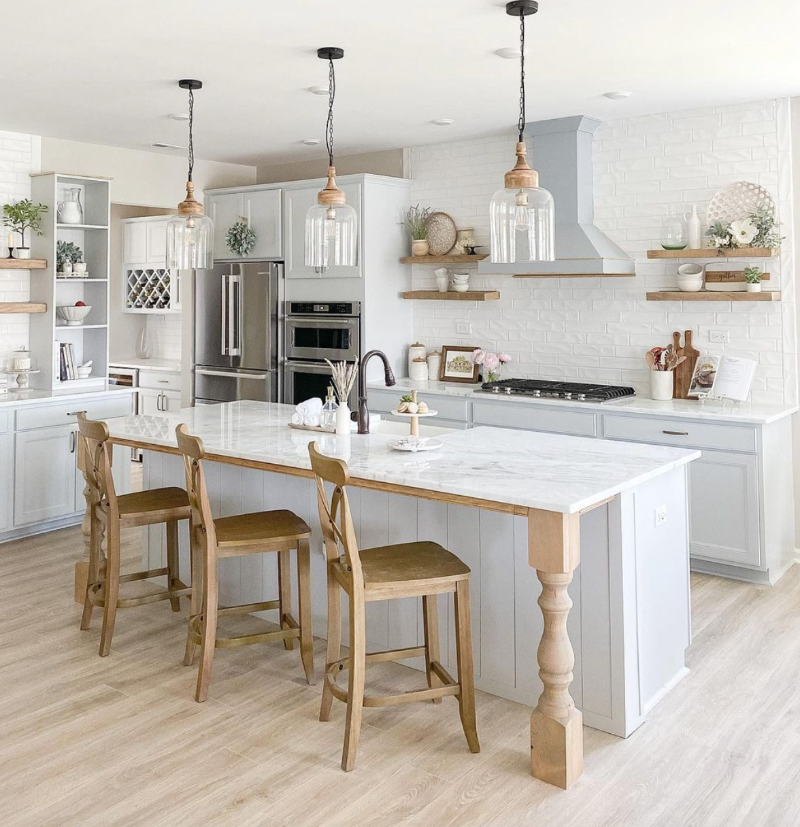A Comprehensive Guide to Picking the Right Kitchen Island Leg
Wiki Article
The Significance of a Sturdy Kitchen Island Leg in Producing a Functional Food Preparation Area
A strong kitchen island leg functions as a fundamental component in developing a functional cooking environment, offering needed support for both the countertop and numerous kitchen area activities. The stability it uses can dramatically reduce the threat of crashes in high-traffic locations, while also adding to the total visual comprehensibility of the area. As cooking areas progress right into multifunctional locations for food preparation, dining, and socializing, the choice of products and layout factors to consider for island legs ends up being increasingly essential. Comprehending these elements can change your kitchen area right into a safer and extra reliable location, motivating further exploration right into the ideal options offered.Advantages of Sturdy Island Legs
Giving important assistance, durable kitchen area island legs play a crucial function in boosting the performance and toughness of kitchen area islands - kitchen island leg. These legs not just birth the weight of the countertop and any additional items positioned on the island, however likewise add to the general stability of the structure. A well-supported kitchen island guarantees that it stays useful and upright, also under hefty use, which is particularly vital in hectic cooking area settingsAdditionally, strong island legs can boost the visual allure of the cooking area. They give a strong structure that can enhance various layout styles, from contemporary to conventional. This versatility allows property owners to personalize their kitchen islands according to individual preference while making sure that the structural integrity continues to be uncompromised.
In addition to their supportive role, durable kitchen area island legs can likewise enhance security. Ultimately, spending in durable cooking area island legs is crucial for a functional and visually pleasing cooking location.
Materials for Cooking Area Island Legs
When choosing products for kitchen area island legs, toughness and aesthetic allure are crucial elements to think about,. One of the most typical products include hardwood, steel, and crafted timber, each offering unique advantages.Wood, such as cherry, oak, or maple, is a classic choice due to its toughness and classic beauty (kitchen island leg). It can endure considerable weight and is immune to use, making it ideal for high-use cooking area settings. Furthermore, hardwood can be stained or painted to complement numerous kitchen designs
Metal legs, typically crafted from stainless steel or functioned iron, provide a contemporary and industrial appearance. They are extremely strong and can sustain substantial lots while being resistant to moisture and warm, which is beneficial in a cooking area. Steel legs can additionally be easily cleaned, boosting their practicality.

Layout Considerations for Security
The option of materials for kitchen island legs straight affects the design factors to consider for stability. When creating a kitchen Visit Website island, it is paramount to assess the weight-bearing ability of the picked products. Larger products, such as solid timber or steel, commonly provide higher stability, particularly under the anxiety of day-to-day use.Furthermore, the leg style should include proper geometry to improve stability. A larger base enhances the support location, minimizing the threat of tipping or wobbling. Consideration ought to also be provided to the height of the legs; disproportionate leg sizes can bring about discrepancy, endangering the general stability of the island.
Moreover, the distribution of weight throughout the island is essential. Making certain that the leg placement lines up with the heaviest components, such as home appliances and countertops, will further enhance security.
Maintenance Tips for Longevity

Cleaning up is an additional important element of upkeep. Relying on the material of the legs-- whether timber, metal, or composite-- ideal cleaning methods need to be utilized. For wooden legs, a gentle wipe with a moist fabric and an appropriate timber cleaner will help protect their coating. Metal legs may require a light polish to avoid corrosion and maintain their luster.
In addition, tightening bolts and screws regularly can make sure stability and see this here stop tottering. If the kitchen island experiences hefty use, think about reinforcing the legs with additional braces or sustains to enhance toughness. Applying a safety coating or sealant can protect against dampness and stains, extending the life-span of the legs. By adhering to these maintenance tips, house owners can ensure their cooking area island legs stay durable and functional for years to come.
Choosing the Right Leg Style
Routine upkeep ensures that kitchen island legs remain durable and useful, however choosing the best leg design is similarly crucial for both appearances and support. The option of leg style can significantly influence the total design and harmony of your kitchen area.
Performance is one more essential aspect. Thicker legs or those with a durable base can sustain heavier counter tops and tools, improving the island's utility. Alternatively, slender legs may create a ventilated look, suitable for lighter designs but potentially less helpful.
Final Thought
In recap, the importance of strong kitchen island legs can not be overemphasized in the development of a useful cooking location. These legs give essential support, boost stability, and contribute to the general aesthetic of the kitchen.A sturdy kitchen area island leg offers as an essential component in developing a useful cooking atmosphere, offering necessary assistance for both the counter top and different kitchen area activities.Offering important support, strong cooking area island legs play an essential duty in enhancing the performance and sturdiness of kitchen area islands. Ultimately, investing in strong cooking area island legs is important for a practical and aesthetically pleasing cooking area.
Factor to consider should likewise be given to the elevation of the legs; out of proportion leg lengths can lead to imbalance, jeopardizing the general stability of the island.
Wood legs provide warmth and a traditional look, while metal legs offer a industrial and modern feel.
Report this wiki page